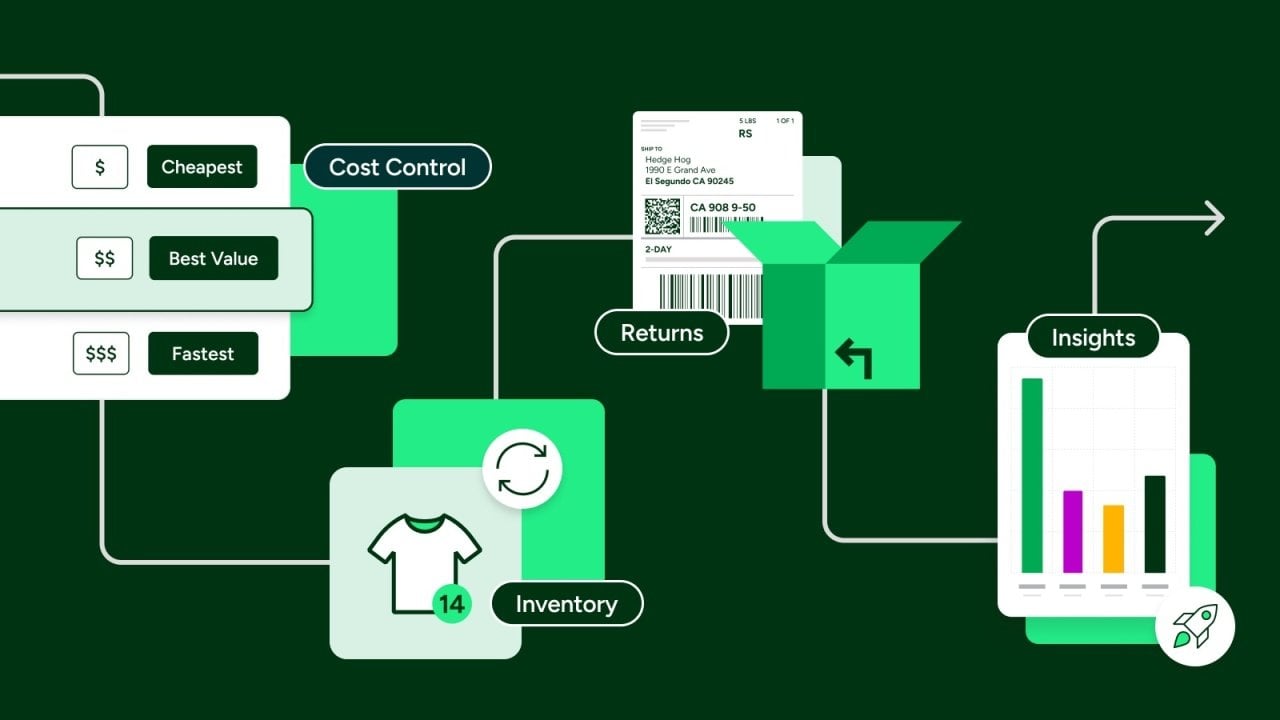From order to outcome: Building scalable fulfillment operations that drive growth

Chokniti-Studio // Shutterstock
From order to outcome: Building scalable fulfillment operations that drive growth
A customer experience could be dialed in—attractive storefront, easy checkout, steady orders. So why does fulfillment still feel like putting out fires?
This is the scaling paradox that catches most growing businesses off-guard. The approach that works for 50 orders per month starts breaking down at 500 orders per month. As businesses grow, their fulfillment needs evolve. Smart businesses are investing in scalable fulfillment operations that grow with their ambitions, ShipStation reports.
It’s about more than just volume. It’s about operational complexity that multiples faster than order count.
Where Good Shipping Meets Operational Reality
“Good shipping” goes beyond the simple journey the customer sees—they place an order, you ship it, they receive it. But behind the scenes, there’s an invisible complexity: fluctuating inventory levels, returns requests without clear processes, wildly varied shipping costs, and data scattered across different systems that don’t communicate with each other.
The breaking point isn’t always dramatic—it’s often a slow degradation. Inventory discrepancies start causing stockouts. Returns pile up, creating customer service headaches. Businesses end up overpaying for shipping because they don’t have time to rate-shop every shipment. Most frustrating of all, more time is spent managing these operational fires than growing the actual business.
This is where traditional shipping solutions hit their limits. They were built to solve one specific problem: getting packages from point A to point B efficiently. But scalable fulfillment requires coordinating the entire operation, not just optimizing shipping.

ShipStation
The Four Pillars of Scalable Fulfillment Operations
1. Smart Shipping Cost Control
When shipping 50 orders a week, there might be time to manually compare UPS vs. FedEx vs. USPS for each package. But when processing 500 orders, that manual rate shopping becomes impossible—and the cost of suboptimal carrier choices starts adding up fast.
This urgency has intensified as 41% of consumers now prioritize delivery costs while shipping container costs have hit near-record highs. With pressure from both customers and operations, every shipping decision directly impacts competitiveness.
This is where it’s key to transform the shipping strategy. Instead of defaulting to the “usual” carrier or making quick decisions under pressure, having a system that automatically evaluates every shipment against business criteria and selects the optimal choice from multiple carriers can ensure scaling is a success.
Here’s how such a system ideally works: You define what matters most to your business—fastest delivery, lowest cost, or best value based on delivery time requirements. For each shipment, the system instantly compares all available options and automatically selects the carrier and service that best meets your criteria. Need to override for a specific customer or rush order? You can still intervene when business needs require it.
The impact is immediate: Businesses save money per label and significantly reduce shipping workflow clicks. This isn’t just about cost savings. It’s operational efficiency that scales. This eliminates the daily decision fatigue of carrier selection while ensuring every shipment is optimized according to business priorities.
2. Inventory Control That Actually Works
Inventory management is where scaling businesses hit their first major operational wall. At small volumes, spreadsheets and gut instincts work. But as volume grows, inventory becomes a high-stakes balancing act—too much stock ties up capital, while stockouts mean lost sales.
Instead of reactive inventory management, get forecasting tools that analyze sales patterns to anticipate demand during seasonal spikes. Purchase order functionality lets you use that forecasting data to generate and send purchase orders to vendors in a snap, eliminating guesswork.
The game-changer is mobile barcode scanning integration. Your team scans items, instantly updating inventory across all channels. During fulfillment, scanning ensures accuracy while providing real-time visibility into what’s been picked and shipped. Because everything connects directly to your order sources, all systems communicate automatically, eliminating the need to manually update stock levels anywhere.
The result: optimal inventory levels without juggling multiple platforms, reduced fulfillment errors, and time freed from manual tracking.
3. Returns That Build, Not Break, Relationships
Returns often mean lost revenue and frustrated customers—especially when handling each one manually via email exchanges and phone calls that don’t scale. With 69% of customers willing to switch brands for more convenient return options, a poor returns experience isn’t just costly. It’s a competitive liability.
The key is transforming this pain point into a competitive advantage. For example, customers can use a branded self-service portal to initiate returns on their own timeline, while businesses get admin oversight and Return Management Authorization lifecycle management to track everything from initiation to resolution.
The revenue retention key is integrated exchanges. Instead of just processing refunds, the ideal system offers customers alternatives like different sizes or colors, and can even suggest additional products that a business can customize during the process. This keeps revenue in the business while providing customers the flexibility they want.
The result: Returns become streamlined, brand-building experiences that retain both revenue and customer loyalty.
4. Insights That Drive Profit
Operating without fulfillment visibility is like navigating without GPS—you’ll reach your destination, but waste time and fuel on unnecessary detours.
Instead of gut-feel decisions about which carriers to use or which products are truly profitable, track which shipping methods actually deliver the best value, identify the most profitable sales channels, and spot trends before they impact the bottom line.
The result: strategic decision-making that transforms basic shipping into scalable fulfillment operations.
The Competitive Reality of 2025
Customer expectations across the board are only going up. According to ShipStation’s Breaking Benchmarks Report, 75% of consumers are expressing significant concern about online costs and 69% are willing to switch brands for more convenient delivery or return options. Businesses need seamless returns, cost transparency, and fast fulfillment to stay competitive.
The businesses winning this race aren’t just optimizing shipping—they’re unifying their entire fulfillment operation. Instead of juggling separate tools for rate shopping, inventory management, returns processing, and analytics, they’re consolidating everything into platforms that scale with their growth.
The question isn’t whether your current fulfillment setup will hit a scaling wall. It’s when. Assess where your operations will break at two times your current volume. Are you manually choosing carriers? Managing inventory in spreadsheets? Handling returns via email? Each of these manual touchpoints becomes a bottleneck as you grow.
This story was produced by ShipStation and reviewed and distributed by Stacker.
![]()


